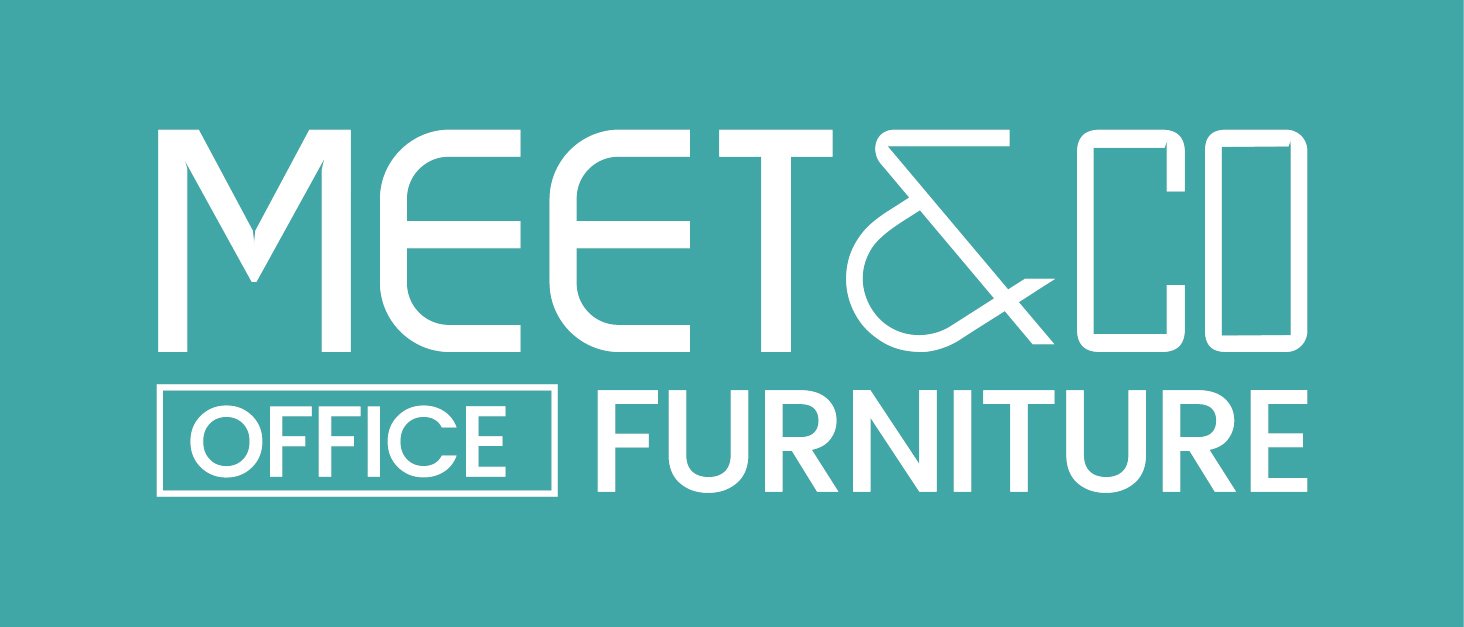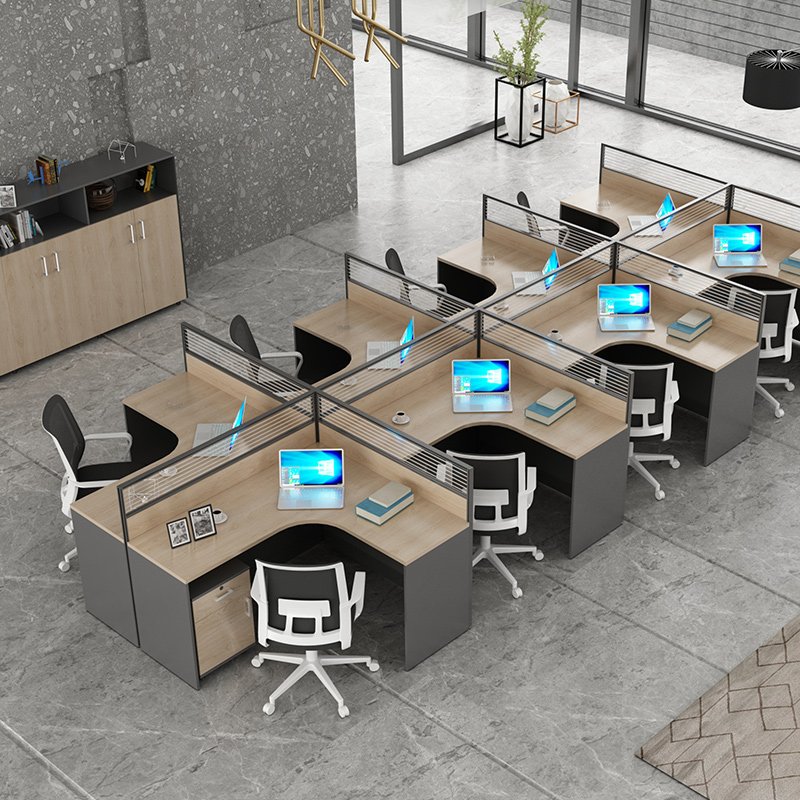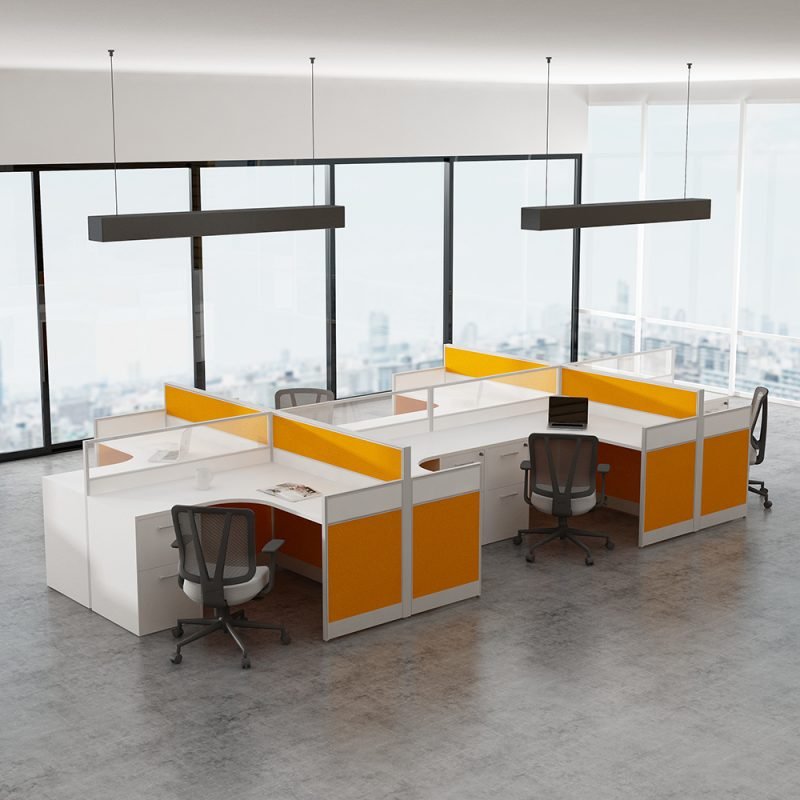In the bustling environment of a call center, the choice of desk isn’t just a matter of furniture—it’s a crucial component that can significantly impact the productivity and well-being of the staff. With employees spending long hours at their desks, handling calls, and managing data, the right desk setup can enhance efficiency, support physical health, and boost morale. Conversely, the wrong choice can lead to discomfort, decreased productivity, and even health issues.
This guide aims to navigate the myriad options available for call center desks, outlining the key features to look for and offering practical advice on how to select the perfect desk for your call center operations. We’ll discuss everything from ergonomic design and durability to integration with technology and aesthetic considerations.
Understanding Call Center Needs
To select the ideal desks for your call center, it’s critical to first understand the specific needs of the environment and your employees. Here are some crucial factors to consider:
Space Utilization
- Maximizing Space: Call centers often operate in limited spaces. Desks should be chosen based on how well they utilize the available area without overcrowding, allowing for efficient traffic flow and easy access for all employees.
- Layout Planning: The arrangement of office desks can influence the overall functionality of the call center. Planning should focus on optimizing the layout for communication and supervision while maintaining individual workspace integrity.
Employee Comfort
- Ergonomics: Since call center employees spend extensive periods seated, ergonomic features are non-negotiable. Adjustable height, adequate legroom, and support for proper posture are essential.
- Personal Space: Each employee needs enough desk space to work comfortably without feeling cramped, which is vital for maintaining focus and efficiency throughout their shifts.
Technology Integration
- Equipment Accommodation: Desks must have the capacity to house all necessary technological equipment—computers, multiple monitors, telephones, and possibly more advanced communication tools.
- Cable Management: Effective cable management systems are essential to keep the workspace tidy and functional and to prevent accidents or equipment damage.
Understanding these primary needs will guide you in making informed decisions when exploring the various desk options available. This foundational knowledge ensures that the chosen furniture will enhance the operational efficiency of the call center while supporting the well-being of its employees.
Key Features of an Ideal Call Center Desk
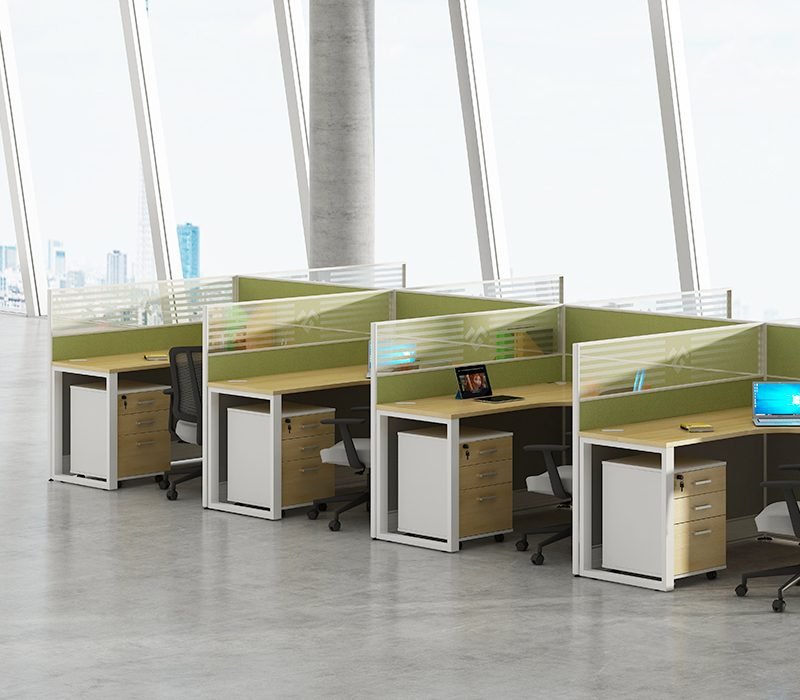
Choosing the right desk involves more than just picking a model that fits the space. It’s about finding a solution that enhances productivity, withstands the demands of a busy environment, and supports the health of the workforce. Here are the essential features to consider when selecting a call center desk:
Ergonomic Design
- Adjustable Features: Look for desks that offer adjustable heights, which can accommodate different body sizes and preferences. This flexibility is crucial for preventing strain and fatigue over long shifts.
- Adequate Desk Space: Ensure that the desk provides ample space for necessary equipment and documents, allowing for a clean and organized workspace that promotes efficiency.
- Compatibility with Ergonomic Chairs: The desk should pair well with ergonomic chairs, facilitating proper posture and minimizing the risk of musculoskeletal problems.
Durability
- Material Quality: Desks should be constructed from materials that can endure the wear and tear of continuous use. High-quality woods, metals, or reinforced plastics are preferred for their longevity and ease of maintenance.
- Construction Integrity: Pay attention to the build quality, including joints, hinges, and mounts. A well-built desk will withstand the rigors of daily use without wobbling or deteriorating quickly.
Acoustic Considerations
- Sound Absorbing Materials: In a space where many employees are talking simultaneously, desks with sound-absorbing panels or surfaces can help reduce overall noise levels, making it easier for employees to hear and be heard.
- Privacy Panels: Glass partitions or privacy panels can provide a sense of isolation, helping to block out conversations from adjacent spaces and reducing auditory distractions.
Ease of Maintenance
- Surface Cleanliness: Choose desks with surfaces that are easy to clean and resistant to stains. In a high-use environment like a call center, easy-to-maintain materials will keep the workspace neat and hygienic.
- Repairability: Consider the ease of replacing parts or repairing the desk. Desks that are modular in design can often be easily fixed with simple replacements, which is more cost-effective than purchasing new desks.
These key features collectively contribute to a desk’s functionality, durability, and suitability for a busy call center. By prioritizing these aspects, you can ensure that the desks you choose will not only meet the immediate needs of your employees but will also provide long-term benefits by enhancing productivity and maintaining a healthy work environment.
Types of Call Center Desks
Selecting the right type of desk is pivotal for optimizing the workflow and environment in a call center. Each desk design offers unique benefits and can be suited to different operational models. Here’s a look at some popular types of call center desks and their respective advantages:
Modular Desks
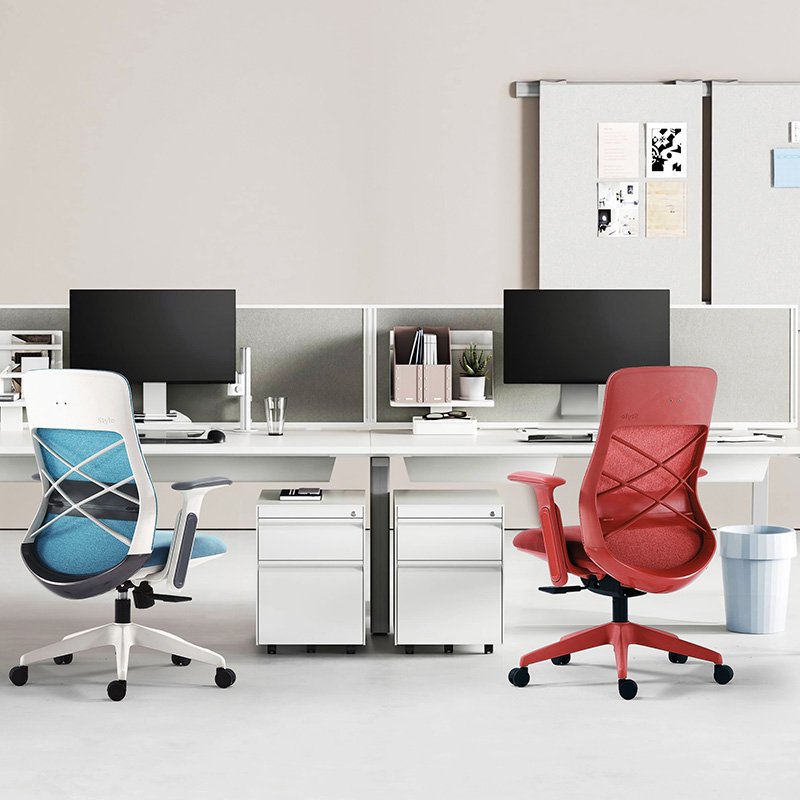
Modular desks are highly versatile and can be easily reconfigured to suit changing needs. They typically consist of interchangeable parts that can be assembled in various layouts.
Best for call centers that anticipate changes in team size or layout, as they allow for easy expansions or reductions without significant investments.
Workstation Clusters
These are groupings of desks that maximize space use by sharing components like side panels and surfaces. They often include built-in power outlets and data ports for easy connectivity.
Particularly effective in environments where space is at a premium, workstation clusters can accommodate more agents in a smaller area while maintaining individual workspace integrity.
Sit-Stand Desks
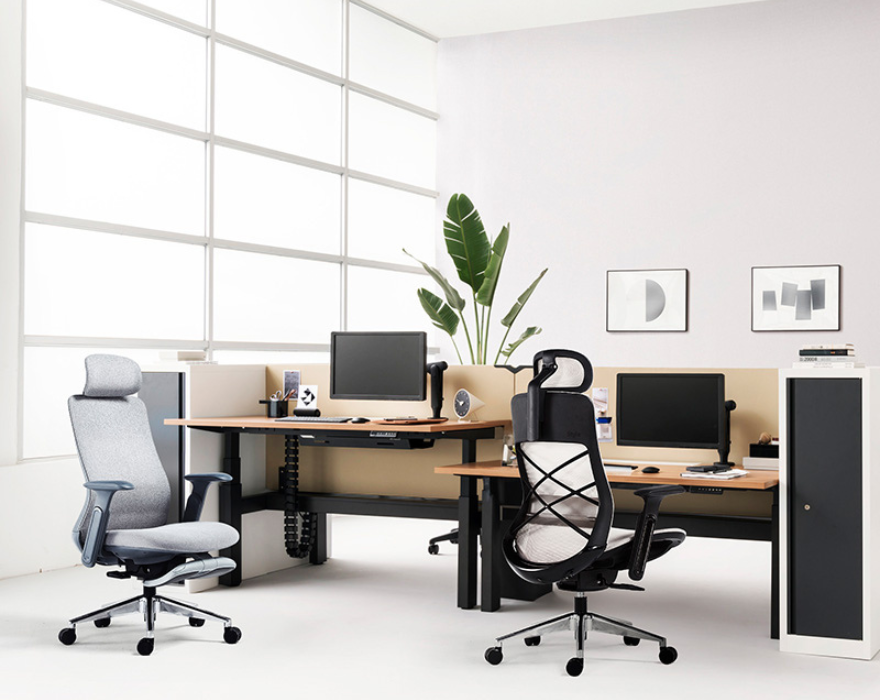
These desks adjust between sitting and standing heights, promoting better posture and reducing the health risks associated with prolonged sitting, such as lower back pain and cardiovascular issues. The ability to change positions may also boost productivity and energy levels, keeping employees more alert throughout their shifts.
Many sit-stand desks come with features like memory settings for preferred heights, which can be particularly useful in a shared desk setup.
Individual vs. Shared Desking
- Pros and Cons of Individual Desking: Offers personalized space for each employee, allowing for customization to individual needs, which can increase comfort and efficiency. However, it requires more floor space per person.
- Pros and Cons of Shared Desking: Economical in terms of space utilization and often cost-effective. Shared desks can foster a team environment and easier collaboration but may decrease personal comfort and increase distractions.
- Determining What Works Best: The choice between individual and shared desking largely depends on the call center’s operational requirements, culture, and space availability.
Choosing the Right Desk Type
- Consider Operational Dynamics: Understand how different teams interact and the nature of their work to choose a desk configuration that supports these activities best.
- Employee Feedback: Involving employees in the selection process can provide valuable insights into what works best for them, potentially leading to higher satisfaction and productivity.
- Future Needs: Anticipate future changes in the workplace, such as team expansions or shifts in operational strategy, when selecting the type of desk.
By carefully evaluating these desk types and considering their suitability for your specific call center environment, you can make an informed decision that enhances operational efficiency, supports employee health, and optimizes space use.
Integration with Call Center Technology
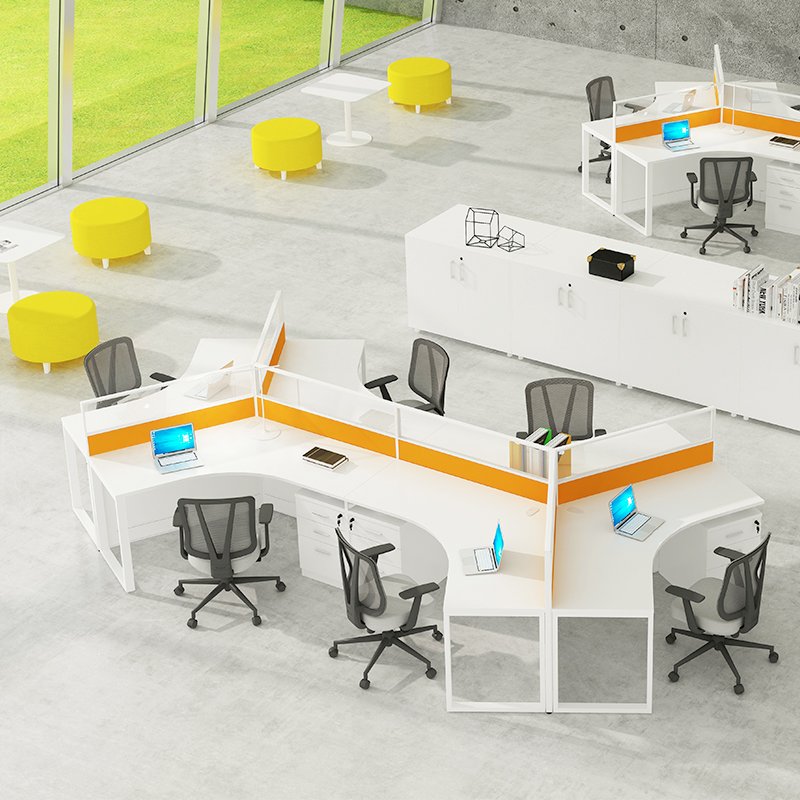
In the digital age, a call center’s effectiveness is greatly enhanced by its technological capabilities. Therefore, the desk you choose should seamlessly integrate with the technology used in your operations. Here’s how to ensure that the desks are compatible and conducive to the technological needs of a modern call center.
Desk Features for Tech Integration
- Built-in Connectivity Options: Look for desks with integrated USB ports and power outlets. This feature ensures that employees can easily connect their devices without cluttering the workspace with excessive cables and extension cords.
- Effective Cable Management Systems: A good call center desk should have efficient solutions for managing cables. Features like under-desk cable trays or in-built channels help keep cables organized and out of the way, reducing hazards and maintaining a clean look.
- Ample Space for Multiple Monitors: Given that call center agents often need to work with multiple screens, the desk should have enough surface area to accommodate this setup comfortably.
Compatibility with Communication Tools
- Accommodation for Advanced Equipment: Desks should be designed to hold not just computers and phones but also other essential devices such as headsets, VoIP systems, and possibly video conferencing equipment. This requires sturdy, expansive desk surfaces and sometimes additional shelving or storage.
- Ergonomic Layout for Ease of Use: The arrangement of technology on the desk should facilitate ergonomic use. Monitors should be at eye level and within easy reach, and there should be enough space for keyboards and mice to be used comfortably.
Future-Proofing
- Adaptability for Upgrades: As technology evolves, so too might the equipment needed in a call center. Choosing desks that can accommodate future upgrades or changes in equipment is essential. This might mean selecting modular designs that can be easily adjusted or expanded.
- Flexibility in Configuration: Consider whether the desk design allows for changes in layout or the addition of new technological tools. Flexibility is crucial to adapt to new processes or software that may become relevant.
Integrating technology into the call center desks not only enhances functionality but also increases overall productivity by ensuring that agents have easy access to everything they need. By considering these aspects, you can select desks that will serve your call center well into the future, supporting both current and emerging technological requirements.
Aesthetics and Branding

The visual design and aesthetic appeal of call center desks are more than just superficial concerns; they can significantly impact employee morale and reinforce company culture. Here’s how to make sure your desk choices enhance the workplace environment and align with your brand identity.
Design Consistency
- Cohesive Look: Ensure that the desks match the overall interior design of your office. Consistent furniture styles, colors, and materials help in creating a unified look that is pleasing to the eye and professional.
- Brand Alignment: Choose desk designs that reflect your company’s branding. This includes considering colors that match your logo, design themes that fit your corporate style, and materials that convey your business values (e.g., innovative, traditional, eco-friendly).
Creating a Motivating Environment
- Color Psychology: Utilize colors that can influence mood and productivity. For instance, blue can induce calmness and focus, while green might enhance creativity and comfort.
- Incorporate Elements of Wellness: Adding aspects like adjustable lighting, ergonomic features, and even plant life can make the workspace more enjoyable and less stressful for employees.
Practical Considerations

When finalizing your decision on call center desks, there are several practical aspects to keep in mind to ensure a successful implementation.
Budgeting
- Cost-Benefit Analysis: Evaluate the long-term benefits of higher-quality desks against their upfront costs. Investing in durable and ergonomically designed desks can reduce future expenses related to workplace injuries and furniture replacement.
- Financial Planning: Plan your budget to include not only the cost of the desks but also delivery, installation, and any potential modifications.
Supplier Selection
- Reputation and Reliability: Choose office furniture manufacturers or suppliers known for quality and service. Read reviews and perhaps talk to other businesses that have used their services.
- Warranty and Support: Look for good warranty terms and customer support services, which can be crucial for resolving any issues post-purchase.
Installation and Setup
- Minimal Disruption: Plan the installation process to ensure minimal interruption to daily operations. This might involve setting up new desks outside of regular office hours.
- Professional Installation Services: Utilize professional services to ensure that the desks are correctly assembled and set up, which can help prevent issues related to improper installation.
Conclusion
Selecting the perfect desks for your call center is a complex but crucial process that involves balancing functional needs, ergonomic benefits, aesthetic preferences, and budgetary constraints. By carefully considering the types of desks that best fit your operational needs and employee preferences, integrating technology effectively, and ensuring the design aligns with your brand, you can create a workspace that not only looks great but also enhances productivity and employee satisfaction.
Invest wisely in your office furniture by choosing solutions that are not only functional and beautiful but also adaptable to future needs. This strategic approach will help in fostering an engaging and efficient work environment that supports your team’s best performance.
